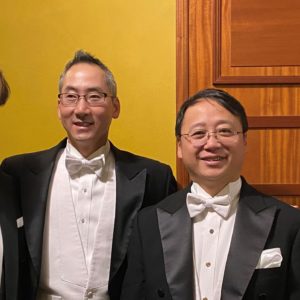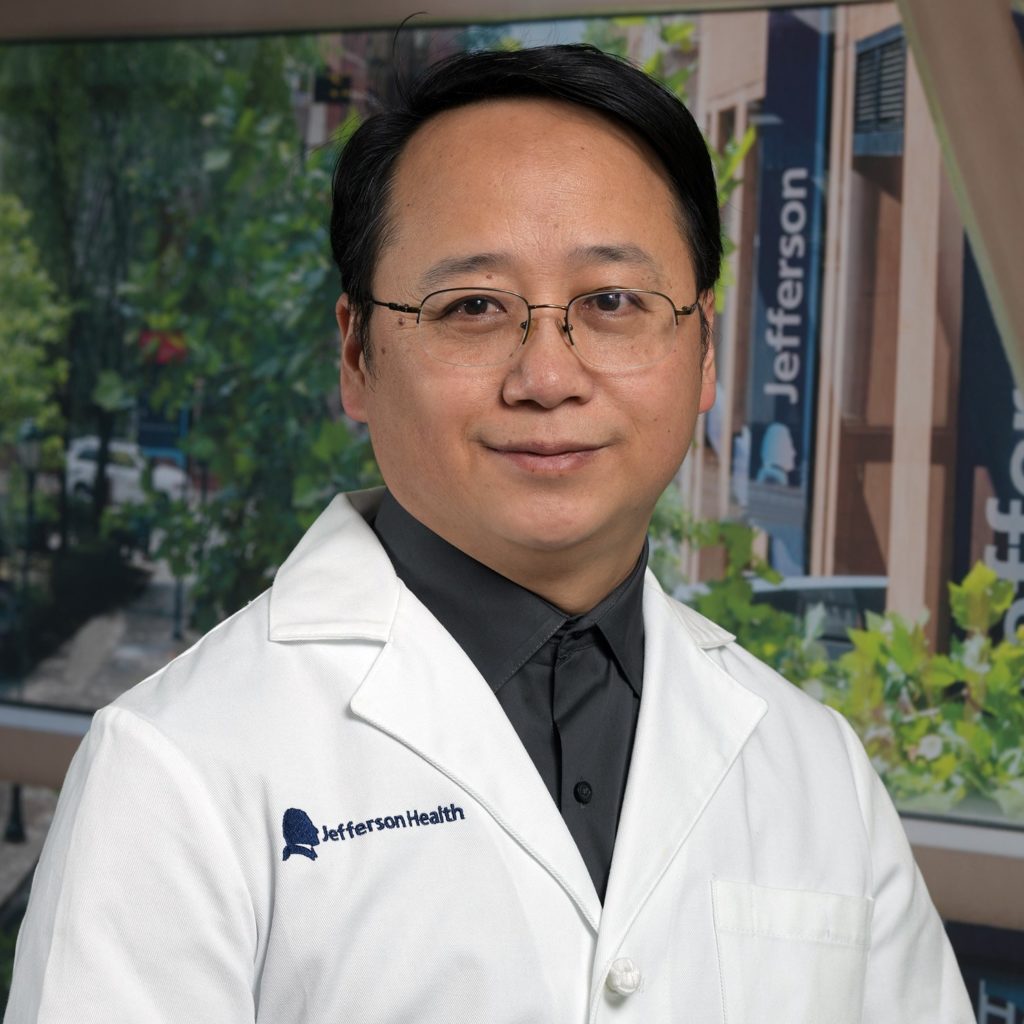
Amanda hopes her cancer journey is a positive example for her kids
April 22, 2024
This is a guest post by Amanda Reitz, a mother of three children who were 13, 9, and 5 years…
Read More
Dr. Haifeng Yang and Dr. William Kim received a 2020 Advanced Discovery Award for their project to “Investigating the anti-tumor efficacy of a STING agonist on PBRM1-deficient ccRCC tumors,” which will examine whether a novel compound can help in kidney cancer treatment. Both Yang and Kim trained with Dr. William Kaelin, Jr. at the Dana Farber Cancer Institute as postdoctoral fellows but this is their first official research collaboration. Yang is a molecular biologist and assistant professor at Thomas Jefferson University in Philadelphia, Pennsylvania and Kim is a physician-scientist and professor at the University of North Carolina-Chapel Hill.
We spoke with Yang and Kim about their work and what it could mean for people with kidney cancer.

Dr. Haifeng Yang (HY): The initiation of kidney cancer development requires the von Hippel-Lindau (VHL) mutation but that mutation alone is not sufficient. VHL loss collaborates with many secondary mutations such as PBRM1, SETD2, BAP1, and so on and so forth. A long-running theme in my lab was to find out why does the VHL mutation need the help of other mutations in order to develop full blown kidney cancer? The genes that all these molecules co-regulate home in on a cluster of genes that turns out to be regulated by a transcription factor – ISGF3.
ISGF3 is a potent tumor suppressing factor for ccRCC, as far as we can tell – a brake for tumor growth. Tumors don’t like brakes, you put a block in front of them and they will find a way to get around it. They can mutate PBRM1, SETD2, or BAP1 and at least partially get around that block and may even go on to grow a very big and happy tumor. That’s good for cancer, but not for us!
So, can we slam the brake artificially to stop the cancer in its tracks? In this case, [the pharmaceutical company] GlaxoSmithKline has identified an artificial compound that activates STING, an interferon stimulator that works upstream from ISGF3. They are doing phase I clinical trials in patients with solid tumors but kidney cancer is not their focus.
With that molecule, we can potently activate this brake and check whether that is useful in blocking tumor growth for multiple kidney cancer tumor models.
I should say that both Billy [Dr. William Kim] and I were trained in Dr. Bill Kaelin’s lab as postdocs, so our research was heavily influenced by him – he’s a Nobel Laureate.

Dr. William Kim (WK): While immunotherapy has definitely been a revolution in cancer treatment with kidney cancer being one of the cancers that has benefitted tremendously, it’s still only effective in about 20% of patients. The STING agonist has a tumor intrinsic effect as well as affecting the immune microenvironment perhaps in a positive way to help checkpoint inhibitors work better. The overwhelming majority of drugs currently approved to fight kidney cancer are working on the cells around the tumor cells and our hope is that the STING agonist will work both as a tumor suppressor on the tumor cells as well as on these surrounding cells.
HY: We are looking for a new pathway that can serve as a drug target for kidney cancer patients. Also, we’re looking for a new type of drug that we can add to our arsenals against kidney cancer.
The interesting thing in our preliminary tumor model is that the compound we’re testing activating STING is hitting the two known effective mechanisms to treat kidney cancer, too – reduction in tumor blood vessels and recruiting innate immune cells into the tumor. That piques our interest and maybe later, we can combine this compound with tyrosine kinase inhibitors or immunotherapy.
HY: We chat whenever we can. Scientists need to communicate with each other to push science forward. We came at this research question from different angles.
WK: We’ve definitely talked about projects before, so thank you very much, KCA! Haifeng came and gave a talk at UNC and during our meeting and over discussions at dinner we realized we had come up with the similar scientific findings and hypotheses in parallel and writing this grant solidified the relationship.
HY: Although we have made inroads against this cancer through work from many scientists, we’re still dealing with more than 13,000 deaths every year. It’s a combination of scientific curiosity and also the burning need for us to find better treatments for kidney cancer patients. [Non-profit] support can never be overstated in making a difference in my lab and hopefully our work can make a difference for the kidney cancer patients and their families. Special thanks also go to my Chair and the leadership at the Sidney Kimmel Cancer Center at TJU.
WK: I love what I do. If I won the lottery, I don’t think I’d quit my job. I want to make an impact on people’s lives. But I remember Bill [Dr. William Kaelin] telling me not to get caught up in the instant gratification of clinical medicine – that science is a long game and you help people in a different way. My father died of head and neck cancer when I was a postdoc in Bill’s lab, in fact. That experience certainly changed the way I view patient care and added further motivation to revolutionize the care of cancer patients.
I also love the role of physician-scientist and being able to bridge the bench-to-bedside aspect. That’s where Haifeng and I have been able to synergize. I can see if something makes sense for patients and he can read more deeply into things and say if our outlandish dreams are crazy or not.
HY: I’d like to add a bit about the joy of science. That goes back 20 years to Bill [Kaelin’s] lab. I was doing an experiment that a major publication had said would not work, but I thought the way they were thinking about it was wrong and I modified the method. And then, in the lab for the first time, I showed that VHL binding to the HIF protein was oxygen-dependent*. The adrenalin that runs through the body was unparalleled! Being able to use our way of thinking to unveil a very jealously guarded secret of nature, to have that eureka moment, that puts you on top of the world and it’s one of the thrills nothing else can replace.